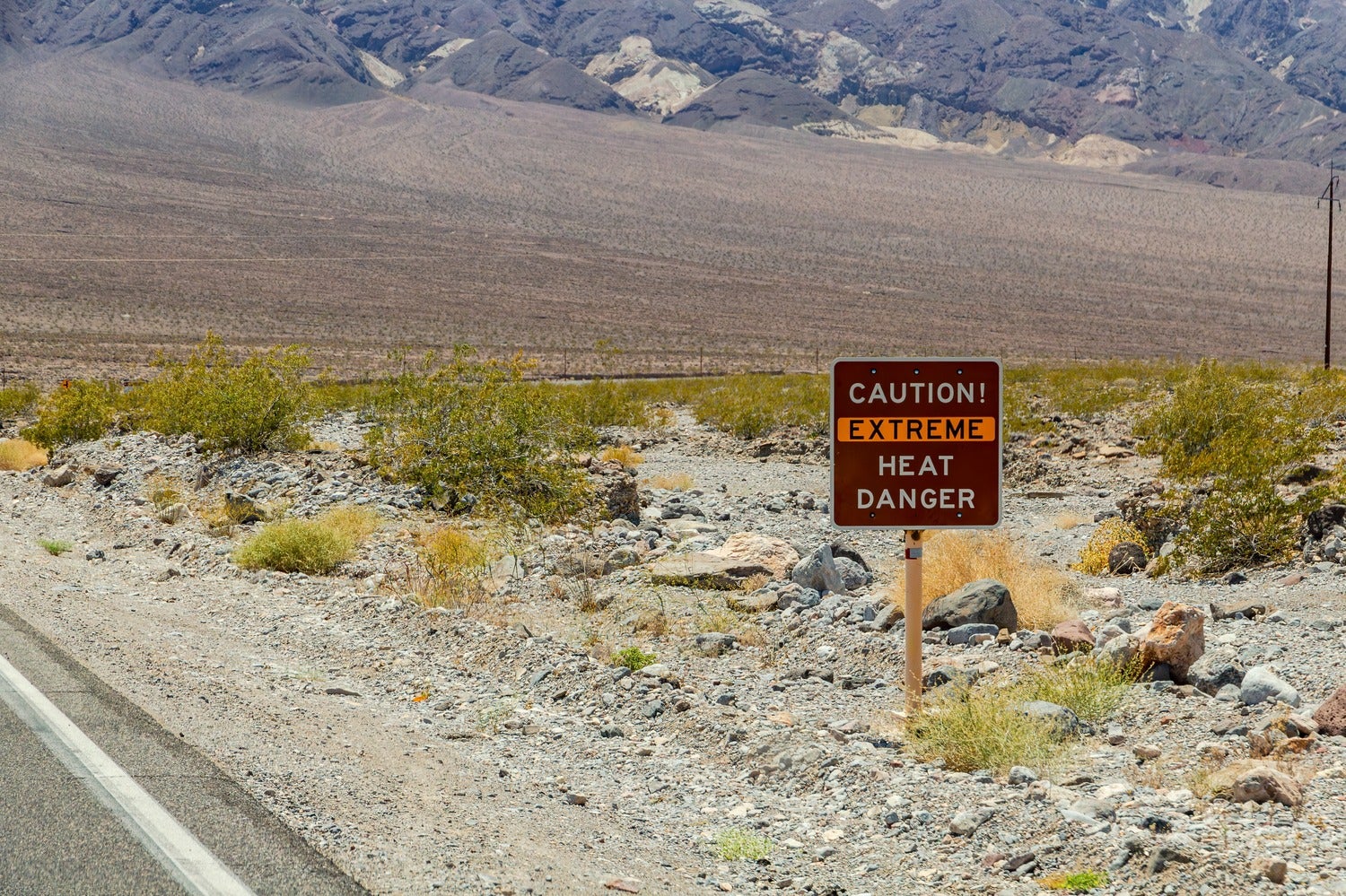Have you ever noticed that climate activists, policymakers, and journalists (present company included!) tend to say we’re working to save the “world” as opposed to the “planet”? Well, it’s true, and the reason is all about context. The planet, this mass of rock and water, can survive extreme heat. The world—today’s makeup of flora, fauna, and humans—on the other hand, won’t have an easy time. And a paper published earlier this month provides a deeper look at humankind’s place (and role) in the history of Earth’s existence.
The research, which appeared in the journal Science, is the most detailed look yet at Earth’s average temperature over the past 485 million years. Scrolling wayyyyy back in this way can give us clues as to what life here may be like in the distant future, and underscores the role we can play in shaping that future for humans and other species. Can the world as we know it survive? Outlook not so good.
Setting the scene here starts with a simple admission: Earth today isn’t that hot, planetarily speaking. The historic temperature peak was around 97 degrees Fahrenheit, while the average global temperature last year was 59. But in steamier times, the planet looked different, and so did the creatures that lived on it. Take the era known as the Paleocene-Eocene Thermal Maximum, which was around 55 million years ago: Back then, temperatures averaged around 78 degrees Fahrenheit. To beat the heat, mammals shrunk by around 30%, including for example the Sifrhippus sandae, the earliest known horse species, which dropped from an already tiny 12 pounds to 8.5. Reptiles at the same time grew even bigger; fossils from the time include snake vertebrae four times larger than today’s anacondas.
“We are changing the climate into a place that is really out of context for humans. The planet has been and can be warmer—but humans and animals can’t adapt that fast.”
Jessica Tierney, university of Arizona
The moments when the temperature has risen rapidly tend to be the most disastrous for life on the planet. Earth’s largest mass extinction took place 250 million years ago when volcanic eruptions sent the mercury up 18 degrees Fahrenheit over the course of 50,000 years. Even though today’s average is starting at a lower point, the speed at which human-made carbon emissions have changed the climate over the last 200ish years makes that prehistoric jump look like a bunny slope. Since 1850, the global temperature has increased an average of 0.011 degrees Fahrenheit every year; back then the average annual jump was 0.00036 degrees. That pace is around 30 times faster, which doesn’t give living things enough time to adapt and survive.
“Our entire species evolved to an ‘ice house’ climate, which doesn’t reflect most of geological history,” study co-author Jessica Tierney, a paleoclimatologist and professor of geosciences at the University of Arizona, said in a recent press release. “We are changing the climate into a place that is really out of context for humans. The planet has been and can be warmer—but humans and animals can’t adapt that fast.”
Beyond temperature, this paper also confirmed an essential piece of information that’s key for understanding how our planet’s past fits into the world’s future: In all of those times where the Earth was especially toasty, the carbon dioxide levels in the atmosphere were high—and vice versa for lower temperatures coinciding with less CO2. The authors, in fact, label carbon dioxide “the dominant control on global temperatures across geological time.” The difference with today’s climb is that we know what’s causing it and, importantly, that it’s entirely possible to mitigate the worst to come.

